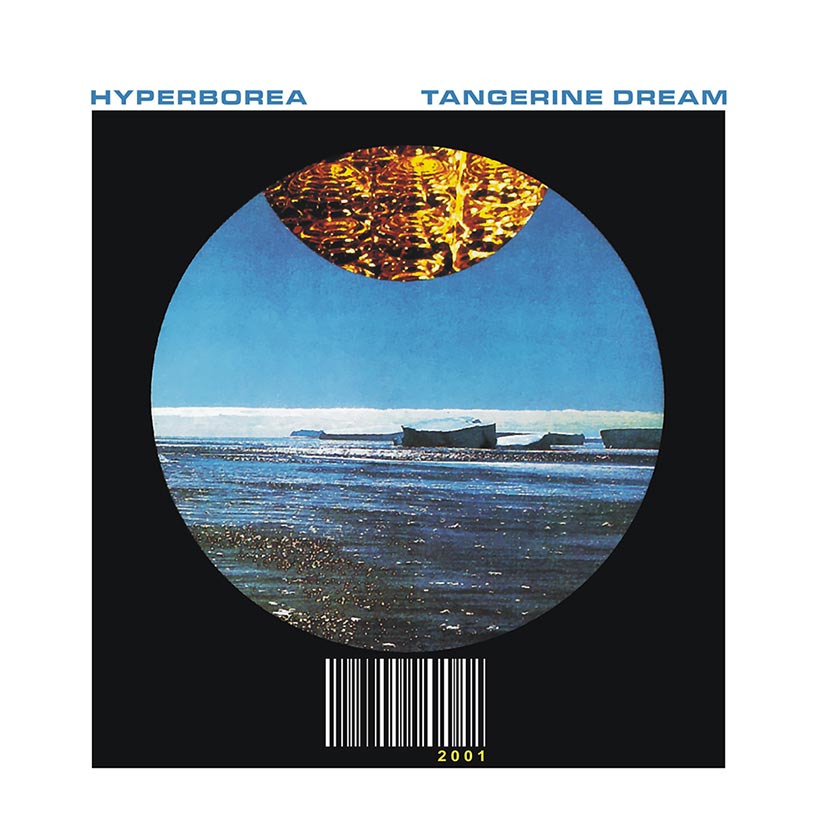
Chameleonic electronic music futurists Tangerine Dream built their enviable reputation upon groundbreaking proto-ambient 70s classics Zeit, Phaedra, and Rubycon, yet, to their credit, they refused to rest on their laurels. During the early 80s, the West Berlin-based trio enthusiastically embraced the ever-evolving possibilities of digital technology. This soon spilled over into their releases from this era, such as Exit and White Eagle, which included sleek and atypically pop-oriented tracks the likes of “Choronzon,” “Network 23” and “Midnight In Tula.” The sound of the band’s next studio LP, September 1983’s Hyperborea, was also influenced by new technological advancements. Indeed, in the lead-up to recording the album, TD mainstays Edgar Froese and Johannes Schmoelling acquired two of the first waveform-sampling computers on the market. These units meant the band could create independent structures and rhythms, and store everything on (then) extremely state-of-the-art floppy disks.
Listen to Hyperborea on Apple Music and Spotify.
Schmoelling later recalled this period with fondness in a 1994 interview with journalist Mark Prendergast, which now features on the TD fan site Voices In The Net. “Hyperborea was determined by the new generation of digital synthesizers and sampling technology,” he admitted. “We were able to memorize sounds and used a lot of sampled drum sounds. We invented new rhythm structures by using a special arpeggiator technique and so on.”
Released in late 1983, Hyperborea performed respectably, peaking at No. 45 in the UK; a solid, intermittently inspired record, it featured a couple of unlikely, yet pleasant sonic diversions.
The record’s title derived from Greek mythology. “Hyperborea” was a realm “beyond the North Wind” and was believed to be a paradise of sorts: a mythical, idyllic land where the sun shone 24 hours a day. Accordingly, much of Hyperborea’s music was also hot and humid, though two of the LP’s four tracks were superficially influenced by India rather than Greece.
Arguably the record’s highlight, the shimmering, psych-tinged “No Man’s Land” was reputedly inspired by the soundtrack from Gandhi. Fittingly, it was built around tabla-style beats and insistent drones, and featured prominent sitar from Edgar Froese, as did the sultry, sequencer-led “Cinnamon Road,” chosen as the LP’s spin-off 45. Though lacking in similar Eastern promise, the measured title track meanwhile represented Tangerine Dream at their most dignified and courtly, while the inscrutable “Sphinx Lightning,” with its dramatic chords, tolling bells, and rhythmic shifts, bade a final farewell to the experimental, 20-minute epics which had been synonymous with the group since 1971’s Alpha Centauri.
As it turned out, Hyperborea also brought the curtain down on TD’s remarkable decade-long association with Virgin Records, yet unemployment was never on the cards for Edgar Froese and co. Indeed, by the time they recorded 1985’s Le Parc for Clive Calder’s Jive Electro imprint, the group had also taken Hollywood by storm and soundtracked several movies, including the rom-com Risky Business, featuring Tom Cruise in his first major starring role.
The 16CD and double-Blu-ray release, In Search Of Hades: The Virgin Recordings 1973-1979 is out now and can be bought here.
For the latest music news and exclusive features, check out uDiscover Music.
uDiscover Music is operated by Universal Music Group (UMG). Some recording artists included in uDiscover Music articles are affiliated with UMG.